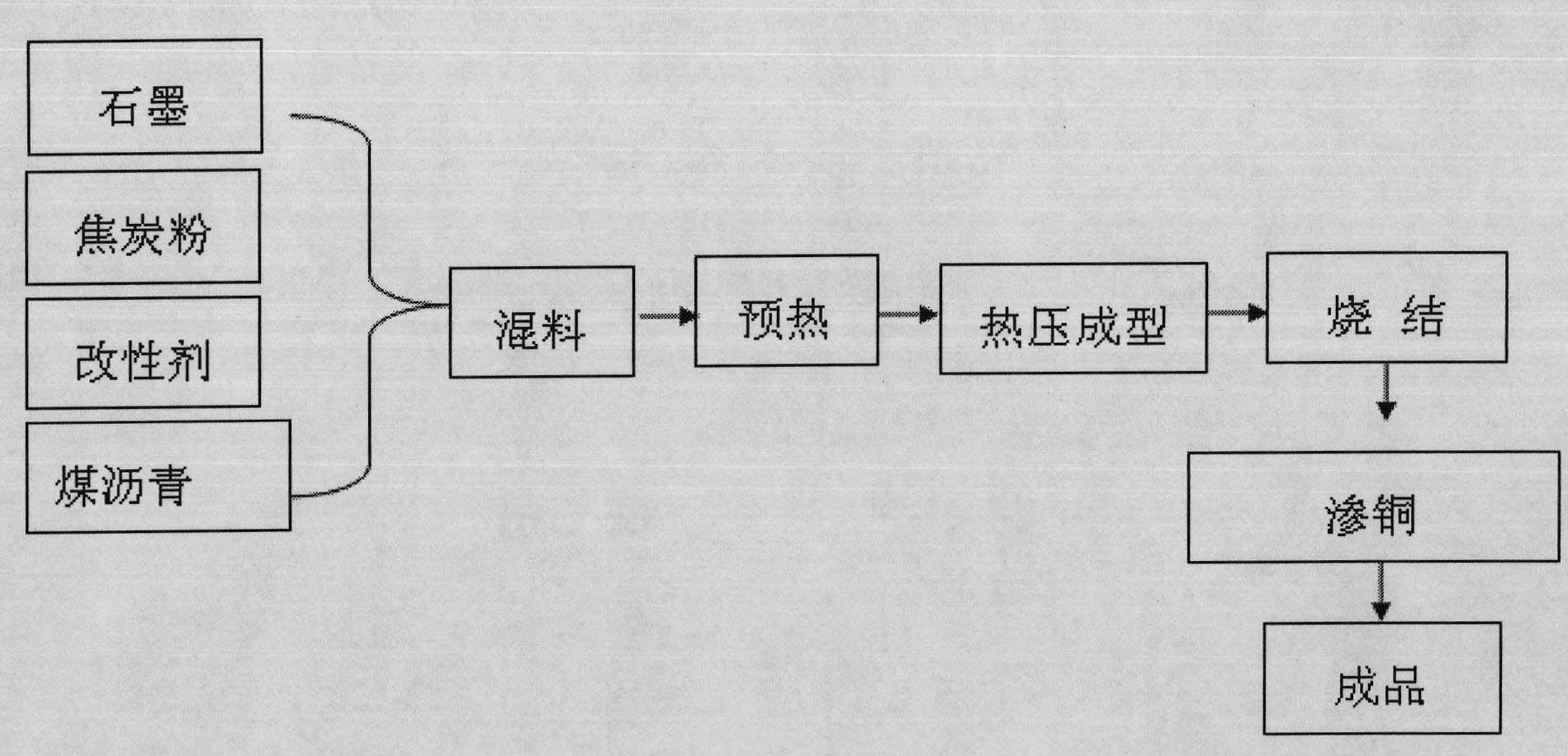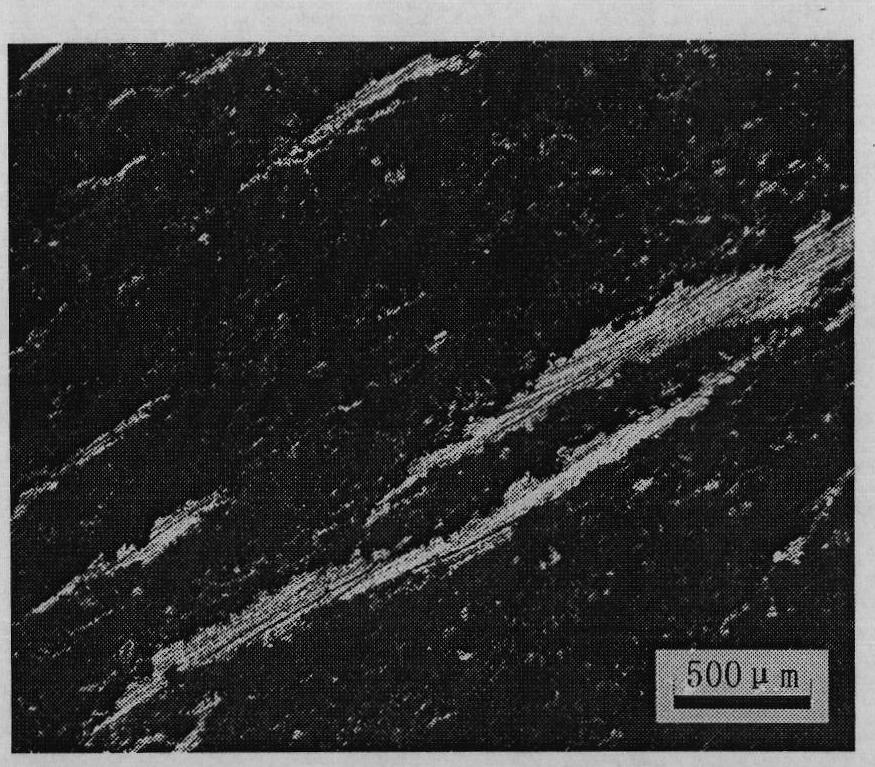Carbon-based slider material for railway vehicle and preparation method thereof
A rail vehicle, carbon-based technology, used in cable/conductor manufacturing, metal/alloy conductors, carbon-silicon compound conductors, etc. The effect of friction performance, good electrical conductivity and good mechanical properties
- Summary
- Abstract
- Description
- Claims
- Application Information
AI Technical Summary
Problems solved by technology
Method used
Image
Examples
Embodiment 1
[0036] (1) Mixing: earlier graphite 25wt%, coke powder 40wt%, sulfur powder 2.0wt.%, molybdenum disulfide 0.5wt%, aluminum oxide 1.5wt%, glass powder 1.0wt% and coal tar pitch 30wt% in the ball mill Stir and mix evenly, and ball mill for 24 hours to make molding powder;
[0037] (2) Thermocompression molding: put the molding powder obtained in step (1) into a mould, heat and pressurize in three stages on the thermocompression molding machine, so that the coal tar pitch is solidified and formed:
[0038] The first stage: temperature 80℃, pressure 200MPa, holding time: 30min
[0039] The second stage: temperature 120℃, pressure 100MPa, holding time: 30min
[0040] The third stage: temperature 200 ℃, pressure 50MPa, holding time: 10min.
[0041] (3) Carbonization: Carry out carbonization treatment on the sample pressed in step (2) in a vacuum carbonization furnace, the treatment temperature is 1000°C, and the carbonization time is 2h;
[0042] (4) vacuumize and dry the sample ...
Embodiment 2
[0047] (1) Mixing: earlier graphite 15wt%, coke powder 55wt%, sulfur powder 2.0wt.%, molybdenum disulfide 0.5wt%, aluminum oxide 1.5wt%, glass powder 1.0wt% and coal tar pitch 25wt% in the ball mill Stir and mix evenly, and ball mill for 24 hours to make molding powder;
[0048] (2) Thermocompression molding: put the molding powder obtained in step (1) into a mould, heat and pressurize in three stages on the thermocompression molding machine, so that the coal tar pitch is solidified and formed:
[0049] The first stage: temperature 80℃, pressure 200MPa, holding time: 30min
[0050] The second stage: temperature 120℃, pressure 100MPa, holding time: 30min
[0051] The third stage: temperature 200 ℃, pressure 50MPa, holding time: 10min.
[0052] (3) Carbonization: Carry out carbonization treatment on the sample pressed in step (2) in a vacuum carbonization furnace, the treatment temperature is 1000°C, and the carbonization time is 2h;
[0053] (4) vacuumize and dry the sample ...
PUM
| Property | Measurement | Unit |
|---|---|---|
| particle size | aaaaa | aaaaa |
| particle size | aaaaa | aaaaa |
Abstract
Description
Claims
Application Information
 Login to View More
Login to View More - R&D
- Intellectual Property
- Life Sciences
- Materials
- Tech Scout
- Unparalleled Data Quality
- Higher Quality Content
- 60% Fewer Hallucinations
Browse by: Latest US Patents, China's latest patents, Technical Efficacy Thesaurus, Application Domain, Technology Topic, Popular Technical Reports.
© 2025 PatSnap. All rights reserved.Legal|Privacy policy|Modern Slavery Act Transparency Statement|Sitemap|About US| Contact US: help@patsnap.com



